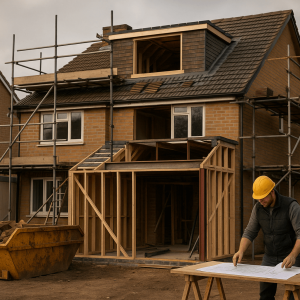Use this guide to master preliminary estimating in construction so you can set early budgets, steer design decisions, and brief clients clearly at RIBA Stages 1 to 3.
Preliminary estimates use high level metrics like cost per m² and elemental allowances to set a defensible budget early, then tighten accuracy as design information improves.
At concept and early design, UK contractors and PQSs typically quote order-of-cost ranges using m² rates and elemental allowances, delivering about ±25 to ±40 percent accuracy at Stage 1, improving to about ±10 to ±15 percent by Stage 3 when drawings and specifications are defined. Region: Great Britain. Base date: Q4 2025. VAT: Rates quoted ex VAT unless stated; most domestic refurbishment is standard rated, qualifying new dwellings may be zero rated. Units: m², l/m, item, %.
- Cost Summary
- Assumptions and Methodology
- What is Preliminary Estimating?
- Detailed Cost Breakdown
- Programme and Durations
- Regional Variation
- Inclusions and Exclusions
- Risks and Allowances
- FAQs
- Sources
- Key Facts & Assumptions (At a Glance)
This post is part of our professional estimating series. If you need a live cost sense-check for homeowners, see the Building Cost Calculator UK. For tool selection and migration planning, read Construction Estimating Software and our Best Free Construction Estimating Software UK. If you want help aligning outputs to quotes, compare Estimating vs Quoting: What’s the Difference?.
Cost Summary
Base date: Q4 2025. VAT: Ex VAT unless noted. Accuracy improves as information improves; typical guide ranges:
- Stage 1 Concept: Order of cost by m² and key elements, typical accuracy ±25 to ±40 percent.
- Stage 2 Developed concept: Elemental cost plan aligned to RICS NRM, typical accuracy ±15 to ±25 percent.
- Stage 3 Spatial coordination: Robust elemental plan with outline specs and quantities, typical accuracy ±10 to ±15 percent.
Use m² rates to start the conversation, then add elemental allowances for structure, envelope, services and finishes to steer design choices.
Assumptions and Methodology
We map early estimating to RIBA Plan of Work and RICS New Rules of Measurement. Preliminary models rely on benchmarked m² rates, parametric factors, and elemental allowances for structure, envelope, services, finishes and preliminaries. We include overhead and profit as a line, then apply risk/contingency appropriate to design maturity. All figures are normalised to Q4 2025 and assume an accessible site and standard specification.
For domestic work, VAT is usually standard rated; qualifying new dwellings may be zero rated. Always confirm VAT treatment under HMRC rules before committing budgets.
What is preliminary estimating in construction?
Preliminary estimating is the practice of setting a project budget when drawings are basic or incomplete. It answers “how much and what if” using simple drivers like floor area, storeys, complexity and location. The estimate is transparent about accuracy and assumptions so design can move forward responsibly.
Detailed Cost Breakdown
These example allowances show how to structure early budgets. Replace the quantities and rates with your own benchmarks.
| Scope | Unit | Low £ | High £ | Typical £ | Base date | Notes |
|---|---|---|---|---|---|---|
| Residential extension (order of cost) | m² | 2000 | 3000 | 2400 | Q4 2025 | Incl prelims and OHP; ex VAT; design and abnormals excluded |
| New build house (order of cost) | m² | 1800 | 2500 | 2150 | Q4 2025 | Zero rated VAT may apply to qualifying dwellings |
| MEP building services allowance | % of build | 18 | 28 | 22 | Q4 2025 | Electrical, plumbing, heating; complexity dependent |
| Preliminaries allowance | % of build | 8 | 15 | 12 | Q4 2025 | Site set up, management, welfare, scaffolds |
| Design and surveys | % of build | 8 | 12 | 10 | Q4 2025 | Architect, structural, MEP, topographical and drainage |
| OHP (overhead and profit) | % of build | 6 | 12 | 8 | Q4 2025 | Depends on risk, programme and market |
| Client contingency (Stage 2) | % of total | 10 | 20 | 15 | Q4 2025 | Higher where design risk or abnormals likely |
Construction Calculators can help you sanity check m² rates quickly. For build-specific homeowner ranges, see Building Cost Calculator UK.
Programme and Durations
- Stage 1 order of cost: 2 to 5 working days from a clear brief and measured area schedules.
- Stage 2 elemental cost plan: 1 to 3 weeks depending on complexity and design information.
- Stage 3 pre-tender refinement: 1 to 2 weeks to align with specifications and supplier inputs.
- Fast-track option: For small residential scopes, we offer a 24 hour turnaround from complete information. Request a Custom Estimate.
Regional Variation
London and the South East trend towards the upper end of ranges due to labour, preliminaries and logistics. Regions with easier access and lower overheads can price nearer the lower bound. Complex urban sites, conservation constraints and remote locations typically require extra prelims and risk allowances.
Inclusions and Exclusions
Included: Benchmark m² rates, elemental allowances, preliminaries, OHP and client contingency suitable for early decisions. Excluded: Detailed takeoff quantities, bespoke specifications, planning fees, utilities upgrades, Party Wall matters, and abnormal ground conditions such as piling or contamination.
Risks and Allowances
- Contingency: Stage 1 allow 20 to 30 percent; Stage 2 allow 10 to 20 percent; Stage 3 allow 5 to 15 percent depending on complexity.
- Provisional sums: Use for uncertain elements like drainage, structural alterations and glazing systems.
- Inflation and market movement: Reconfirm supplier prices prior to tender. Consider indexation for longer programmes.
- Design risk: State assumptions clearly and freeze scope before tender to avoid drift.
Cost disclaimer: Ranges are indicative at Q4 2025 and depend on specification, access and market conditions. Always seek written quotes at tender stage.
FAQs
What information do I need for an order of cost?
Project brief, area schedules, storey heights, target specification level and any known constraints like access or conservation status.
How accurate is a preliminary estimate?
Typically ±25 to ±40 percent at Stage 1, improving to about ±10 to ±15 percent by Stage 3 with defined drawings and specs.
What is the difference between an elemental cost plan and a detailed BoQ?
An elemental plan groups costs by building elements to steer design, while a BoQ measures individual items for pricing and tender comparison.
Should I include preliminaries and OHP in early budgets?
Yes. Include preliminaries, overhead and profit, then add an appropriate contingency for design maturity and risk.
How do I choose the right m² benchmark?
Match project type, quality level, location and complexity. Sense-check against recent projects and current supplier indications.
When should I move from m² rates to elemental allowances?
Move to elemental allowances at Stage 2 when layouts and key systems are known so you can target design value accurately.
How do I present assumptions to clients?
List scope, exclusions, VAT stance, base date, accuracy band and specific risks on one page. Keep the language clear and consistent.
Can software improve preliminary estimating?
Yes. Libraries and templates speed repeatable outputs, while integrations reduce manual entry. See Construction Estimating Software.
Sources
- RICS New Rules of Measurement overview
- RIBA Plan of Work overview
- GOV.UK VAT rates
- HMRC VAT on energy-saving materials
Key Facts & Assumptions (At a Glance)
- Primary keyword: preliminary estimating in construction
- Audience: Builder and trade professionals; PQS and SME contractors
- Region: Great Britain
- Base date: Q4 2025
- VAT stance: Ex VAT unless noted; domestic refurb typically standard rated
- Units: m², l/m, item, %
- Method: RICS NRM elemental build-up with m² benchmarks, prelims, OHP and contingency
- How we calculated this: Benchmarks normalised to Q4 2025 with standard specification and accessible site
Next step: Request a Custom Estimate for your drawings and scope.











